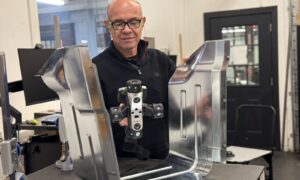Industrial design plays an important role in the production of machinery and equipment. Product designers are involved at all stages – from concept development to implementation of the finished product. Industrial design mechanical engineering is vital to creating functional and aesthetically pleasing mechanical devices. Let’s take a closer look at what exactly these specialists do.
The main tasks of an industrial designer
In the field of mechanical engineering, designers solve two key problems:
- Ensuring functionality and ease of use of equipment.
- Give it an attractive appearance
When developing technology, they work closely with engineers, technologists, and marketers.
At the initial stage, designers conduct research:
- Study the needs and characteristics of the target audience
- Analysis of existing analogues, their strengths and weaknesses.
Next, they begin to generate ideas and create sketches that reflect the general concept of the future product.
Stages of project implementation in mechanical engineering
At the next stage, the development of a design project begins, which includes:
- 3D modeling of parts
- Selection of optimal materials and production technologies
- Creation of layouts, prototypes
- Testing, refinement
Once the final design and construction are approved, production begins.
The final stage is checking the compliance of the finished samples with the approved project.
Thus, industrial design in mechanical engineering covers the entire life cycle of a product – from concept to implementation.
Key specialist skills
To work successfully, an industrial designer in mechanical engineering must have a number of important qualities and competencies:
- Creative thinking
- Knowledge of modern design and production technologies.
- Understanding user needs
- Ability to work in a team with engineers and technologists
Such a specialist is capable of not only creating high-quality, reliable, but also beautiful, easy-to-use products that will be in demand by consumers.



































